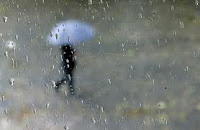We all are very familiar with freshwater's role in generating electricity, changing weather, growing food and improving health. But few of us are aware of how our ancestors used water to make sounds and music.
Playing a glass partially full of water
We have all tried this in our home one time or another. Fill a glass partially full of water and wet its rim and rub one finger along the rim.
The speed with which we move changes the sound that is produced. The sound produced also changes depending upon the amount of empty volume in the glass.
Lining up a few glasses with varying amount of water in them, creates a musical organ.
Water Driven Pipe Instrument - The Hydraulis
With water supplied from some higher point above the instrument, air is introduced in the water stream that is turning a musical cylinder quite like in today's music boxes.
As the air produces pulses in the water stream, the stream changes the rotation of the musical cylinder to produce changes in sounds - changes that together produced music as early as 3rd century BC.
The Hydraulophone
Blocking the flow of water can also be done with the fingers somewhat like the plucking of guitar strings. When a stream of water is stopped by a finger it changes the sound the instrument makes.
In the hydraulophone, water is also sometimes used to make the sound
Water, a most abundant substance on the planet, also has a vast abundance of uses.
Playing a glass partially full of water
 |
| Source - invigorate.royalsociety.org |
 |
| Source - exploresound.org |
Lining up a few glasses with varying amount of water in them, creates a musical organ.
Water Driven Pipe Instrument - The Hydraulis
 |
| hydraulis circa 1,000 BC Source - en.wikipedia.org |
 |
| Water Organ Source - en.wikipedia.org |
As the air produces pulses in the water stream, the stream changes the rotation of the musical cylinder to produce changes in sounds - changes that together produced music as early as 3rd century BC.
The Hydraulophone
 |
| A Hydraulophone Source - en.wikipedia.org |
In the hydraulophone, water is also sometimes used to make the sound
Water, a most abundant substance on the planet, also has a vast abundance of uses.













